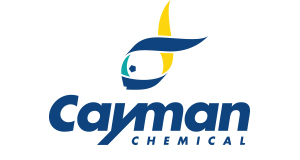PDHE1-A (human, recombinant)
PDHE1-A (human, recombinant)
Artikelnummer
CAY42229-50
Verpackungseinheit
50 µg
Hersteller
Cayman Chemical
Verfügbarkeit:
wird geladen...
Preis wird geladen...
Shelf life (days): 365.0
Formulation: 50 mM sodium phosphate, pH 7.0, with 300 mM sodium chloride, 150 mM imidazole, 0.1 mM PMSF, 0.25 mM DTT, and 25% glycerol
Uniprot ID: P08559
Purity: ≥70% estimated by SDS-PAGE
Formula Weight: 0.0
Notes: Pyruvate dehydrogenase E1 component subunit α (PDHE1-A), also known as pyruvate dehydrogenase E1, is a dehydrogenase and member of the 2-oxo acid dehydrogenase family.{69952,69953} It is a tetramer composed of a cleavable mitochondrial signaling sequence and two α- and β domains with active sites between each of the α/β domain interfaces.{69953} It is a member of the mitochondrial pyruvate dehydrogenase complex and catalyzes the oxidative decarboxylation of pyruvate, which is the first reaction in the enzymatic conversion of pyruvate to acetyl-CoA. Phosphorylation of serine 203, -264, or -271 inhibits PDHE1-A enzymatic activity by blocking active site associations with its cofactor thiamine pyrophosphate (Item No. 20254) and serves as a reversible regulatory mechanism for PDHE1-A and pyruvate dehydrogenase complex activity.{69954} Dichloroacetate-induced phosphorylation of PDHE1-A reduces the viability of HSC-2 and HSC-3 oral squamous cell carcinoma cells.{30577} Mutations in PDHA1, the gene encoding PDHE1-A, are associated with lactic acidosis, developmental delay, cerebral atrophy, seizures, and elevated urine and cerebrospinal fluid (CSF) levels of pyruvate in patients with the inborn error of metabolism pyruvate dehydrogenase complex deficiency (PDCD).{69955,55835} Cayman's PDHE1-A (human, recombinant) protein can be used or enzyme activity assays. This protein has a calculated molecular weight of 47 kDA.
Formulation: 50 mM sodium phosphate, pH 7.0, with 300 mM sodium chloride, 150 mM imidazole, 0.1 mM PMSF, 0.25 mM DTT, and 25% glycerol
Uniprot ID: P08559
Purity: ≥70% estimated by SDS-PAGE
Formula Weight: 0.0
Notes: Pyruvate dehydrogenase E1 component subunit α (PDHE1-A), also known as pyruvate dehydrogenase E1, is a dehydrogenase and member of the 2-oxo acid dehydrogenase family.{69952,69953} It is a tetramer composed of a cleavable mitochondrial signaling sequence and two α- and β domains with active sites between each of the α/β domain interfaces.{69953} It is a member of the mitochondrial pyruvate dehydrogenase complex and catalyzes the oxidative decarboxylation of pyruvate, which is the first reaction in the enzymatic conversion of pyruvate to acetyl-CoA. Phosphorylation of serine 203, -264, or -271 inhibits PDHE1-A enzymatic activity by blocking active site associations with its cofactor thiamine pyrophosphate (Item No. 20254) and serves as a reversible regulatory mechanism for PDHE1-A and pyruvate dehydrogenase complex activity.{69954} Dichloroacetate-induced phosphorylation of PDHE1-A reduces the viability of HSC-2 and HSC-3 oral squamous cell carcinoma cells.{30577} Mutations in PDHA1, the gene encoding PDHE1-A, are associated with lactic acidosis, developmental delay, cerebral atrophy, seizures, and elevated urine and cerebrospinal fluid (CSF) levels of pyruvate in patients with the inborn error of metabolism pyruvate dehydrogenase complex deficiency (PDCD).{69955,55835} Cayman's PDHE1-A (human, recombinant) protein can be used or enzyme activity assays. This protein has a calculated molecular weight of 47 kDA.
| Artikelnummer | CAY42229-50 |
|---|---|
| Hersteller | Cayman Chemical |
| Hersteller Artikelnummer | 42229-50 |
| Verpackungseinheit | 50 µg |
| Mengeneinheit | STK |
| Produktinformation (PDF) | Download |
| MSDS (PDF) |
|

 English
English








